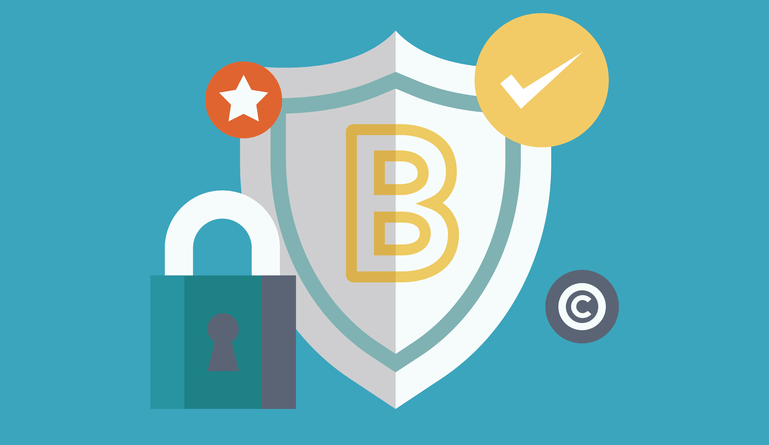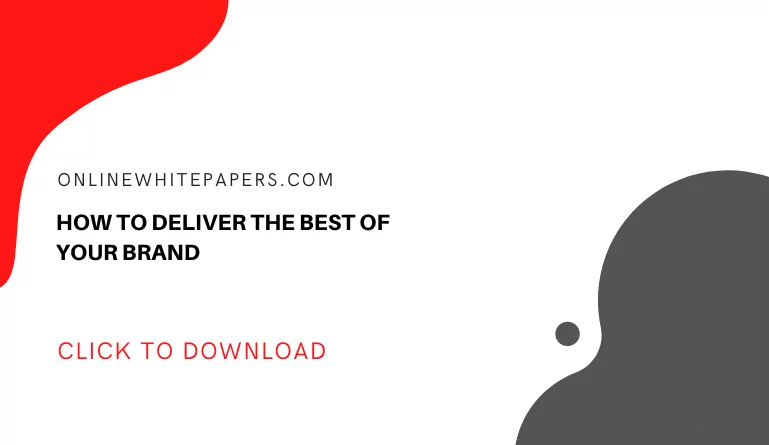When organizations want to protect their trade secrets and the overall brand of the organization, they set up a series of processes and guidelines with a set of action items to safeguard the intellectual property and avoid any misuse of the same. This is done through brand protection so that trademarks, patents, copyrights, and designs are protected.
What is brand protection?
By definition, brand protection is a process by which organizations can protect their intellectual property and associated brands against people who are counterfeiters, and those infringe on these trade secrets. These trade secrets include trademarks, copyrights, patents, and designs.
Brand protection is needed not only to protect from loss of revenue but also to ensure that the reputation and image of the company is not tarnished. In layman terms, brand protection prevents any sort of abuse or misuse of the brand.
Types of brand infringement
There are different ways, in which a brand can be infringed or misused, or abused. Let us look at some of the types of brand infringement that are quite commonly known to the business fraternity.
Brand Abuse
Brand abuse is a general terminology, which is used when an external organization or party tries to wrongly use the brand’s intellectual property to take advantage of the reputation of the brand. Brand abuse usually comes in different forms, such as:
- Counterfeiting
- Rogue Websites
- Piracy of copyright
- Trademark Infringement
- Patent Theft
- Impersonation of Social Media Presence
Organizations have to be extremely cautious when it comes to their brand reputation because they can be an easy target through brand infringement. It has been observed that of all types of brand infringement, counterfeiting is the most popular and the most dangerous for brands.
-
Counterfeiting
A counterfeit product is a product that is replicated from the original brand, unofficially, and sold in the market. In simple terms, it is a fake product, which consists of the same logo and trademarks and markets the fake product without permission. The sole purpose of such counterfeit products is to cheat customers.
It is estimated that the global value of counterfeit products will reach a staggering US$2.3 trillion, by the year 2022. Counterfeiting is one type of brand infringement as its objective is to tarnish the trademark of authentic brands.
-
Rogue Websites
Rogue websites are nothing but websites that are created purely with the intention to share malicious content. This is done either against an authentic website or by infringing its IP. There are different variants of the rogue website
- Imitation sites are websites that exactly replicate the original website of a genuine brand.
- Typo squatters are usually the ones who are waiting for internet users to make typographical errors while entering a website address in the browser.
- Cybersquatters basically take advantage of trademarks of other brands by falsely claiming website domains of authentic games.
Piracy of copyright
Copyright is nothing but legal protection that is provided to people who create scientific works or artistic works. While brands may not have the content for copyright, it is still imperative to ensure that their content such as images, graphics are protected. Pirates can just waltz into the market by creating fake content and promoting them as a legitimate business.
-
Trademark Infringement
People who indulge in infringement or squatting of trademark, are doing it completely in bad faith. It comes in multiple forms, for instance, registration of trademarks of brands that are yet not registered, particularly foreign brands.
-
Patent Theft
Patents are given to new inventions, particularly seen in the pharmaceutical industry. There is a high possibility of external agencies or individuals who can steal the details of the invention and create inventions, without giving due credit to the original patent owner.
-
Impersonation of social media
Lately, there has been a lot of misrepresentation and infringement of trademark and other intellectual property data on social media. External parties create fake social media accounts on various social media channels and conduct various branding propaganda representing the original company.
Why do I need brand protection?
The logic is pretty simple; if you are selling a product that has a trademark registration in your name, there is a high possibility of that product being counterfeited by external people. Hence, it is important for organizations to adopt a brand protection strategy.
From a classification point of view, there are three types of companies that are always at a risk of being infringed. These are product innovators, brand value organizations, and design-focused enterprises. Let us look at why these types of companies need brand protection.
One of the reasons these companies are at risk of counterfeiting is because of the extensive investment – both in form of time and money, that they put to build their brand, conducting detailed research & development of their products, or spending hours and hours of their work in meticulously designing the products.
Brand Protection Solutions
In this section, we will look at some of the top brand protection solutions that provide expert services in this segment.
-
RedPoint
RedPoint is one of the top brand protection service providers. If companies are investing huge on creating their brand, then RedPoint is the answer to their brand protection requirement.
-
SentryC
SentryC has two products – Marketplace Scan and Social Media Scan. These products analyze over 150 international online marketplaces and round the clock. They have an algorithm that runs a combination of keywords, images, and detailed descriptions to check for any infringements.
-
Prisync
Companies, belonging to the manufacturing sector, in particular, trust the minimum advertised price model of Prisync. Due to the large number of distributors that manufacturers sign up for, it is not possible for them to control the price charged by these distributors. Hence, through Prisync’s solution, they are able to control that and protect their brand globally.
What you have seen is just the tip of the iceberg. There are a plethora of solutions available in the market to help companies safeguard their brand. However, what is even more important is the technology behind these service providers, which is explained in the next section.
Brand Protection Technology
Thanks to the internet, counterfeiters can easily take advantage of this technology. Hence, it has become imperative for organizations to adopt modern technology for brand protection. For any brand protection solution, there are 4 key elements to be taken care of
-
Image recognition
This is a tool that can scan through the images that are available online. The tool can be as simple as identifying just the images to as complex as identifying images and the objects within the images.
-
Machine learning
Here the computer works on the concept of neural networks and continuously identifies patterns and establishes relationships between various data points. Once these parameters are defined by ML tools, then keyword monitoring and image recognition tools are able to deliver better results.
-
Keyword monitoring
Here, tools utilize bots that constantly keep searching websites for counterfeits based on keywords. The reason this is one of the most preferred tools is that the majority of counterfeiters use keywords to scout for authentic brands and then create fake ones.
-
User experience
Since brand protection solutions are to be used by brands or enterprises at a broader scale, the systems should be easy to use and seamless in operating. Companies can quickly adopt a new brand protection solution if the user experience is impeccable.
Benefits of Brand Protection
The word brand is a very critical word for any organization. It creates a perception in the minds of customers. For instance, one person could say that he will buy a $100 watch as he just needs to keep a track of time. However, another person would prefer to go for a Rolex and enjoy the artistic creation of the brand. This is brand perception.
Hence, it becomes important to protect such brands because with brand recognition, comes the risk of counterfeiting. Let us look at some of the key benefits of brand protection in this section.
-
Destroys Counterfeiters
Protecting a brand value from counterfeiters is like creating a strong and impenetrable vault against bank robbers. What this does is that it brings down the number of such counterfeiters significantly. It doesn’t eliminate the fact that one who is determined to conduct such a heinous crime shall keep on trying. Companies implement brand protection and deploy a multi-layered strategy to safeguard their brand.
-
Increased Loyalty
Brands are created through a team effort. Moreover, once a brand is created by a company, the consumer uses the brand for their own consumption. A trust factor is established between the two because the product is helping address a problem. This establishes loyalty and in case any counterfeiter infringes this and is eliminated, the loyalty is reinstated, and it keeps growing; thereby creating a stronger bond between the brand and the customer.
-
Increase Profits
Having implemented a safe brand protection strategy allows the company to charge a premium, thereby knocking out the counterfeiter and ensuring that the premium associated with the brand is conveyed to the customer. This results in more customers paying the premium because of the trust factor and thereby the company earns profits.
These are some of the key benefits of brand protection. However, if we try to delve into finer details then the list goes on and on.
What do brand protection services do?
Broadly, services that are delivered by companies that deliver brand protection services, can be categorized into four blocks
- Detect
- Validate
- Enforce
- Report
-
Detect
In this section, the service providers start looking for infringements online. The data can come from various sources such as counterfeit listing on eCommerce or probably a social media profile that is impersonating a brand and so on.
-
Validate
The next step will be to ensure that the identified infringements are infringements in true nature. This validation step is executed to ensure that genuine companies are not accidentally penalized.
-
Enforce
Once they have validated the infringements online, the service providers will start eliminating these infringements online. For instance, they will close the imitation social media account or bring down the rogue website or probably remove the infringed product that was listed on an e-commerce store.
-
Report
This is the final step in brand protection services, where the service provider reports the information of infringement to regulatory bodies and the concerned brands so that the authentic brands are aware of the status of the work done.
Final Thoughts
The battle between brands and counterfeiters is an ongoing one. While brands keep deploying modern tools and technology to safeguard their intellectual property and other trade secrets, counterfeiters keep trying different ways to infringe these data.
The task of brand protection providers has reached a different paradigm because today enterprises are facing a different challenge – digital brand protection, thanks to constantly evolving digital technology and social media.






